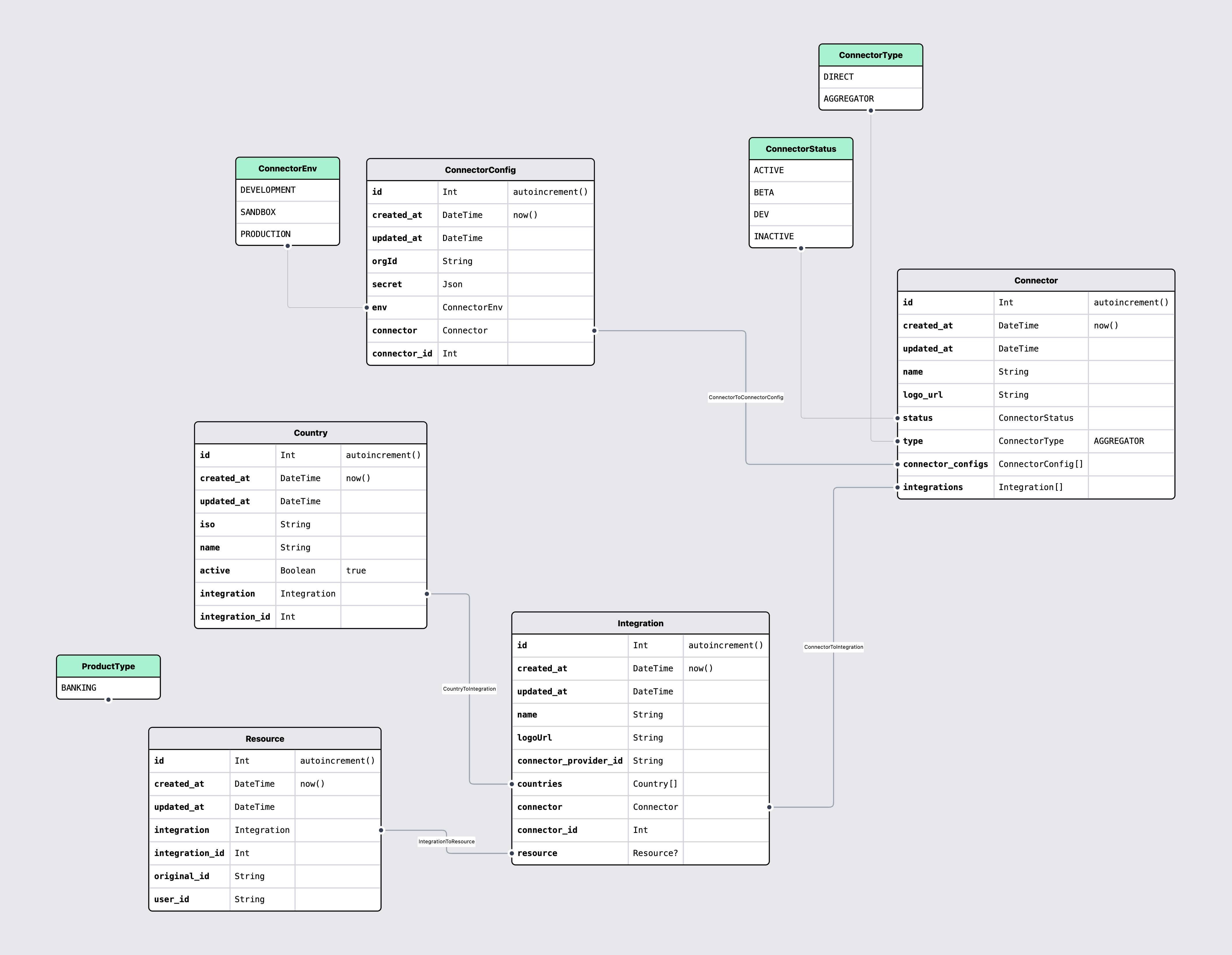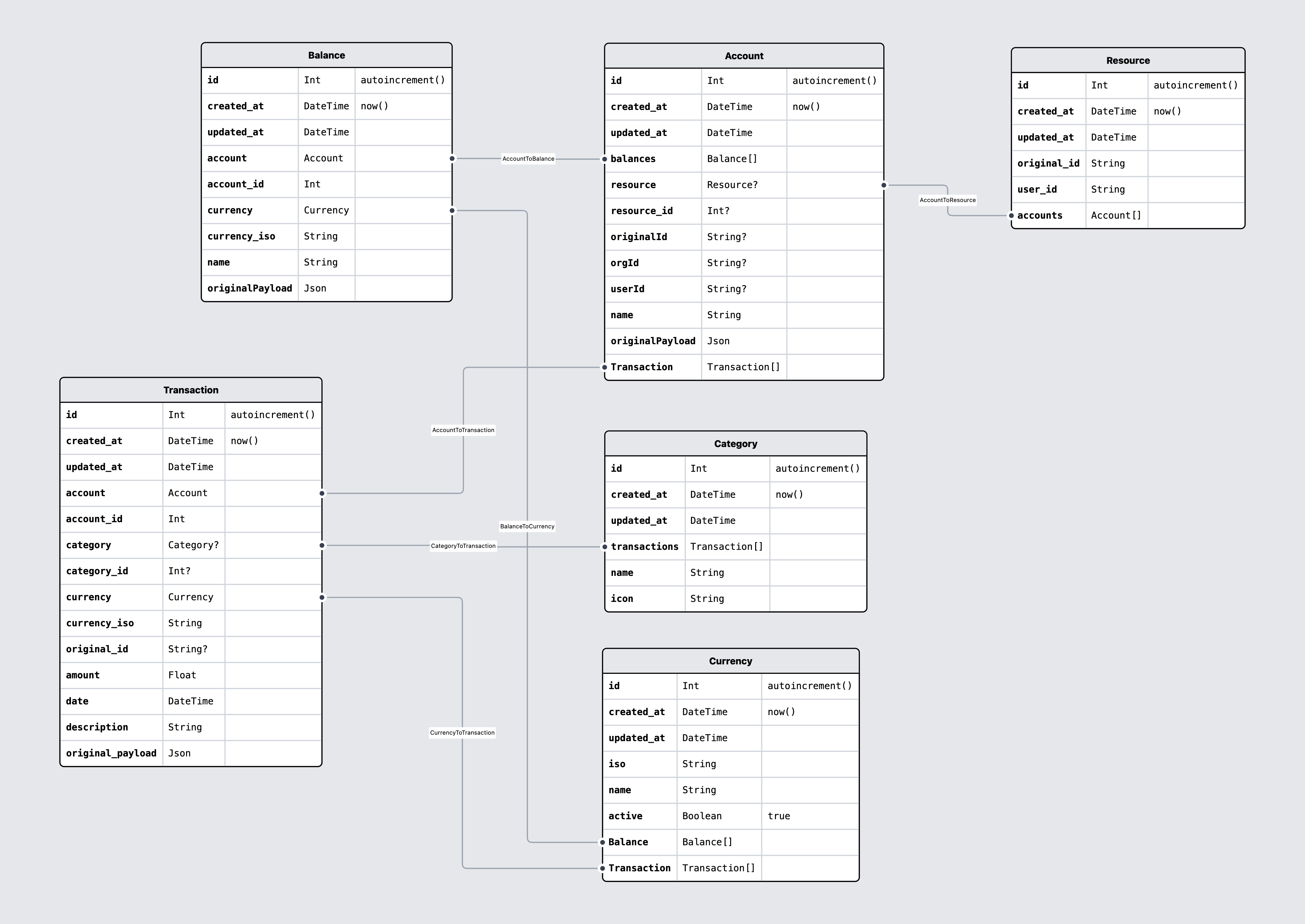Speaking the same language
Badget tries to be as clear and consistent as possible with the nomenclature used throughout the documentation and code base.
To that end, here’s a list of what our primitives are and examples of how you can think of them in use.
 See this data model on prismaliser
See this data model on prismaliser
- Connector: a connector is an implementation of some third-party API that can offer either a single direct connection or an aggregated one to open finance data.
- Provider: A product or a service, the actual open-finance data provider that users wants to connect to (e.g. institution, investment platform...)
- Integration: An integration represents a
Providersupported by aConnector. There can be multiple integrations for a single provider if multiple connectors support the same provider (e.g. Plaid and GoCardless both gives you the ability to connect to PayPal, in addition we may have a direct PayPal connector for a total of 3 PayPal Integrations). - Connector Config: A specific configuration of a Connector. Contains developer account credentials (e.g.
client_id,client_secret), and misc configs (sandbox vs. production). Some connectors does not require configuration. In the future can also contain sync settings (e.g. Automatically sync all Plaid items using this config). - Resource: Associated with a specific Connector Config. Contains customer credentials (e.g.
access_token) and gives you the ability to call Provider APIs. Typically created by an End User but could also created by you in the dashboard (which then belongs to your organization).
TODO: document this better
- Account: A bank account
- Balance: A balance of a specific Account
- Category: A user defined category
- Transaction: A transaction
